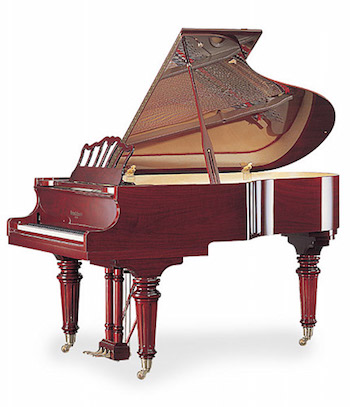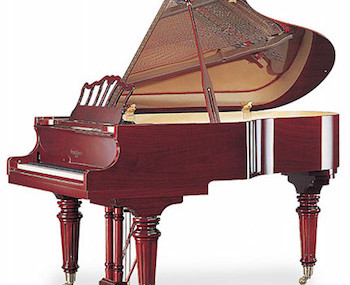Pianos come in a variety of woods.
One of the most common is ebony (often called ebonized), which isn’t actual ebony wood, but instead is an inexpensive veneer that has been painted black. While black may be considered traditional, it by no means is your only choice. Mahogany, cherry, walnut and oak are all popular woods. I f you prefer exotic woods, you can find bubinga, rosewood, and many other styles and colors. And if you prefer color, you can find pianos painted white or ivory, or in some cases through special order you can find red, blue, or many other original colors.
f you prefer exotic woods, you can find bubinga, rosewood, and many other styles and colors. And if you prefer color, you can find pianos painted white or ivory, or in some cases through special order you can find red, blue, or many other original colors.
In addition to the wood itself, you will also find a variety of finishes available. Pianos are typically finished in one of two ways – high polish (high gloss) or satin finishes. High polish produces a near mirror-like quality, where as satin will reflect light but not images.
You can find variations on satin finishes. Matte, which is completely flat, will reflect no light. An open pore finish, common on European pianos, provides a grainier texture as the grain is not filled in before finishing is completed. Semigloss is a finish partially between high gloss and matte.
While finish is entirely a personal choice, it is important to note that pianos finishes do take on different qualities, and therefore require different levels of maintenance. Satin finishes tend to show fingerprints more than do the high polish finishes.
Most piano finishes are either lacquer or polyester. A lacquer finish was most common for pianos produced from the early 1900s into the mid 1970s. Polyester made the scene by that point and has gradually taken over the market share. Lacquer finishes are often times considered more beautiful, but they scratch quite easily. Polyester finishes are more durable, making them a better choice in high traffic areas.
No matter what type and style piano you have, its important to care for it in the proper way.


